What Seeds Can I Sow in June and July? A Guide to Summer Gardening
June and July are perfect months to add more life to your garden. As the weather warms, it opens up new possibilities for planting different seeds. You can sow seeds like sunflowers, zinnias, and pumpkins during these months to ensure a vibrant late summer garden.
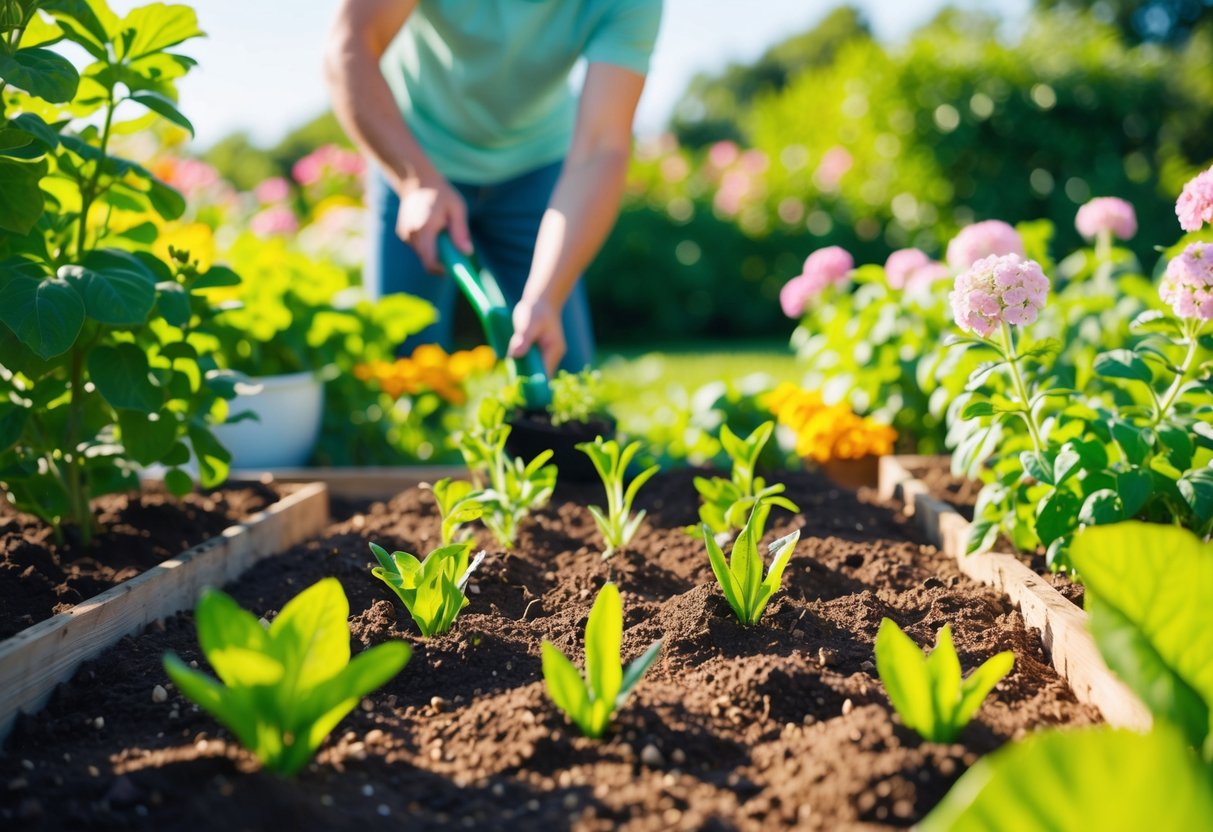
Imagine watching the first sprouts of sweet peas climbing up trellises or the bold colors of marigolds brightening your outdoor space. These warm months mean you can consider adding okra for a touch of green and delicious pods. Don’t forget about zinnias, which will bloom until the first frost.
Your garden can flourish with a mix of beautiful flowers and tasty vegetables. Whether you’re a beginner or a seasoned gardener, there’s something satisfying about seeing your hard work turn into a lively garden. Plus, it’s a great way to enjoy the fresh air and sunny afternoons outdoors.
Preparing Your Garden for Summer Planting

Getting your garden ready for June and July planting means focusing on soil temperature and irrigation. Both of these factors are crucial. They play a big role in determining the success of your summer garden.
Understanding Soil Temperature
Soil temperature plays a vital role in seed germination. Warm soil accelerates growth. Many seeds need a soil temperature of 70°F to 85°F. Use a soil thermometer to monitor this. It’s a handy tool that ensures you plant at the right time.
Different regions have varied soil temperatures. Your local hardiness zone can help guide you on the optimal planting schedule. In cooler zones, like Zone 3, the soil might need extra help warming up. Consider using black plastic sheets, which can raise the temperature faster. This method traps the heat and gives seeds a great start.
Optimal Irrigation Strategies
Effective irrigation ensures your plants get the right amount of water. Summer heat can lead to drought conditions, stressing your garden. Aim to water deeply but less frequently, so the roots grow deep.
Factors like soil type and local climate will influence your watering routine. Sandy soil, for example, may require more frequent watering in hot areas. For gardens in dry growing zones, consider drip irrigation systems. These systems deliver water right to the plant roots, conserving water and minimizing waste. It’s a smart way to keep your garden thriving in the hottest months.
Choosing the Right Seeds for June and July
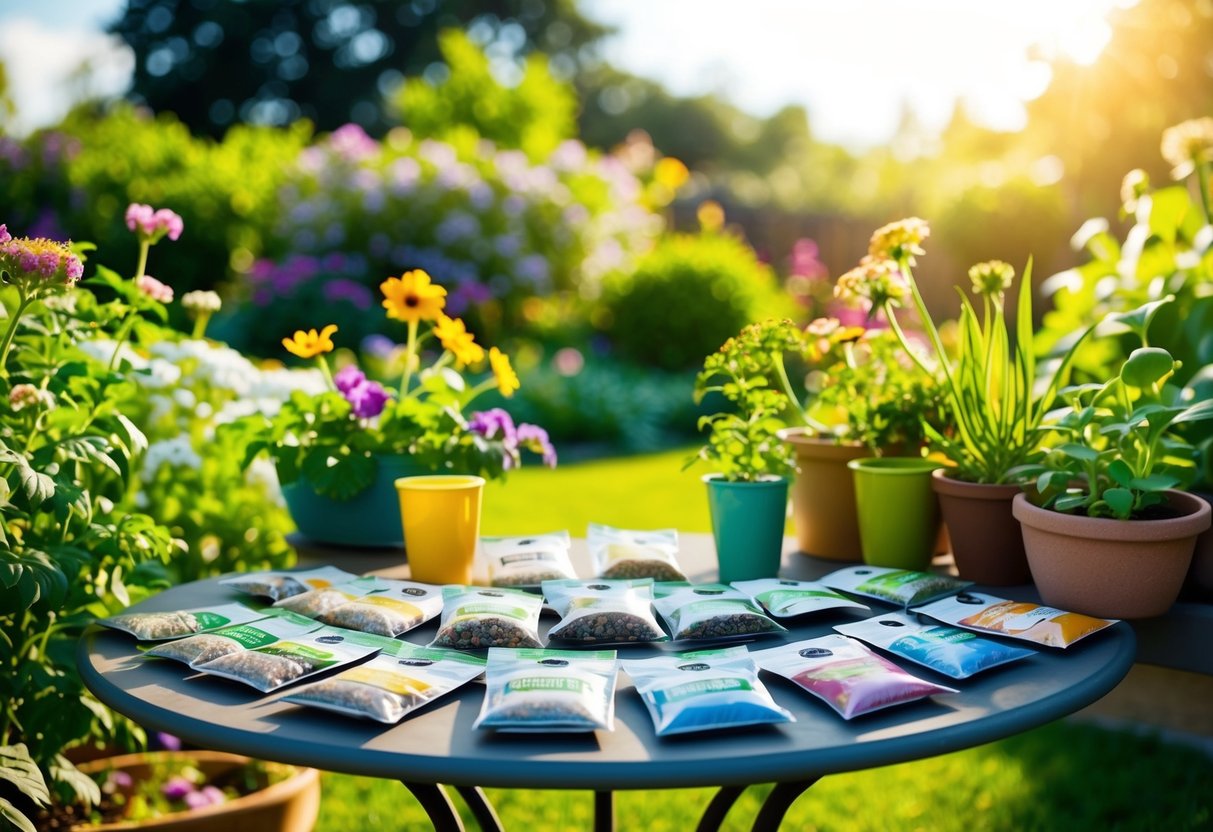
In June and July, you can sow a wide variety of seeds that thrive in the warm summer weather. This time of year is perfect for both vegetable and flower varieties, allowing you to enjoy lush greens and vibrant blooms.
Vegetables to Sow in Early Summer
During early summer, many vegetables are ideal for sowing. Corn, beans, and squash are excellent choices for this time. Sweet corn and pole beans enjoy the warm soil and ample sunlight. If you’re considering greens, kale and cabbages are great options. They provide nutritious leaves that can be harvested continuously.
Carrots and beets are root vegetables that do well in warmer soil and can be sown in June. Zucchini and cucumbers enjoy the sun and can give you a bounty of fresh produce.
Okra is another fantastic option. Known for thriving in hot climates, it grows vibrantly in July. Tomatoes and eggplant, both heat-loving plants, also do well when started early in summer.
Flowers that Thrive in Warm Weather
For flower lovers, June and July are perfect for sowing seeds like sunflowers and cosmos. They enjoy the sun and add stunning colors to your garden.
Zinnias bloom throughout the summer and keep their vibrancy until the first frost. They can be sown up to the first week of July.
Consider planting sweet peas, which can add a lovely scent to your garden. Another great option is alyssum, which is easy to grow and provides lovely ground cover. Sunflowers especially enjoy the July heat, reaching impressive heights and offering bright yellow blooms.
Sowing Techniques for Successful Germination
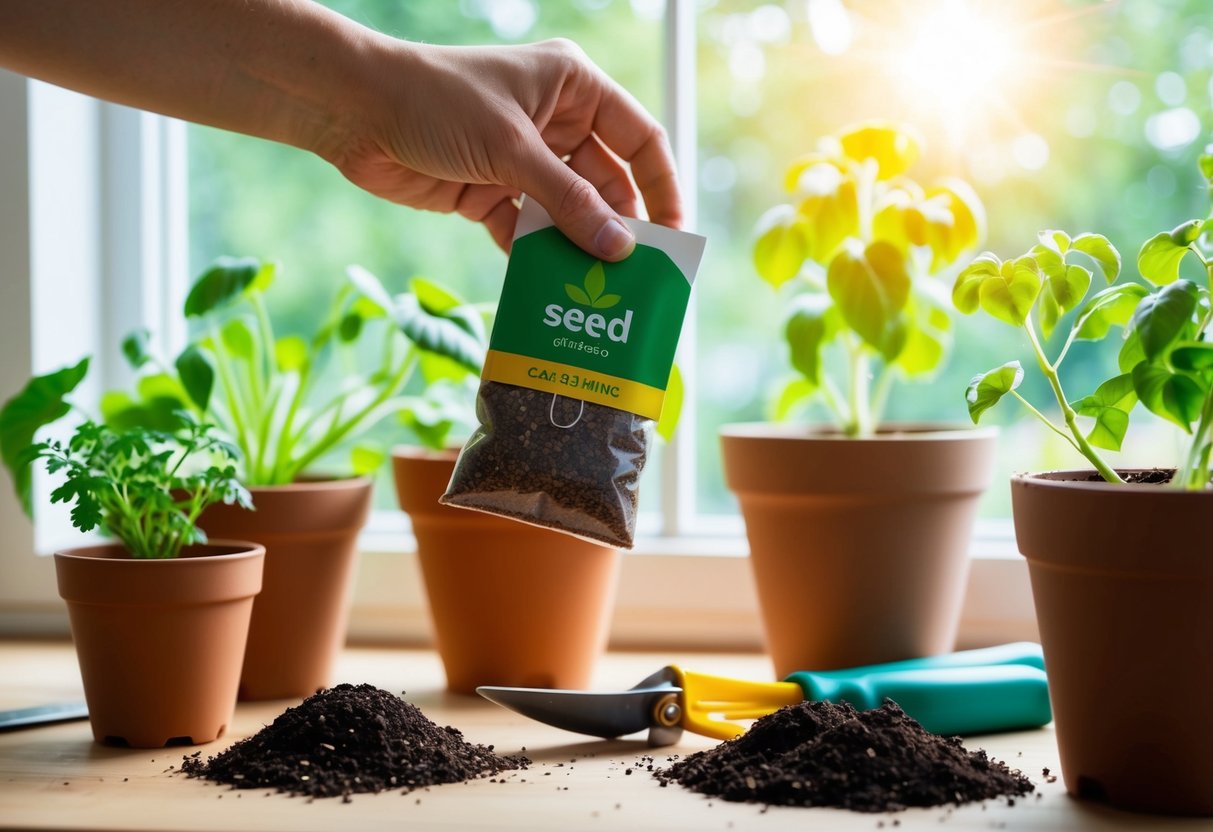
Understanding the best techniques for sowing seeds can lead to a thriving garden. Choosing between direct seeding and starting seeds indoors is crucial, as is planning for succession planting to ensure continuous harvests.
Direct Seeding vs. Starting Indoors
Deciding between direct seeding and starting seeds indoors depends on the seed type and your growing conditions. Direct seeding involves planting seeds directly into your garden soil. This method works well for plants like radishes and carrots that don’t transplant well. Ensure the soil is warm enough to promote healthy germination.
On the other hand, starting indoors is ideal for seeds needing controlled conditions, like tomatoes and peppers. You can give these seeds a head start in early spring. Use seed trays and place them in a sunny spot. Once seedlings are ready, transplant them to the garden. This method lengthens the growing season, especially beneficial in colder climates.
Succession Planting for Continuous Harvests
Succession planting is a technique that allows you to enjoy fresh produce continuously throughout the season. By staggering your planting times, you can harvest crops like lettuce and spinach multiple times. It’s perfect for seeds that mature quickly and are constantly in demand.
To plan your succession planting, note the maturity dates from seed packets. Sow seeds every 2-3 weeks to ensure a continuous supply. This approach also works well for autumn crops, providing fresh vegetables as you transition from summer planting. Proper timing is key to maximize your harvest without overcrowding your garden space.
Companion Planting and Crop Rotation
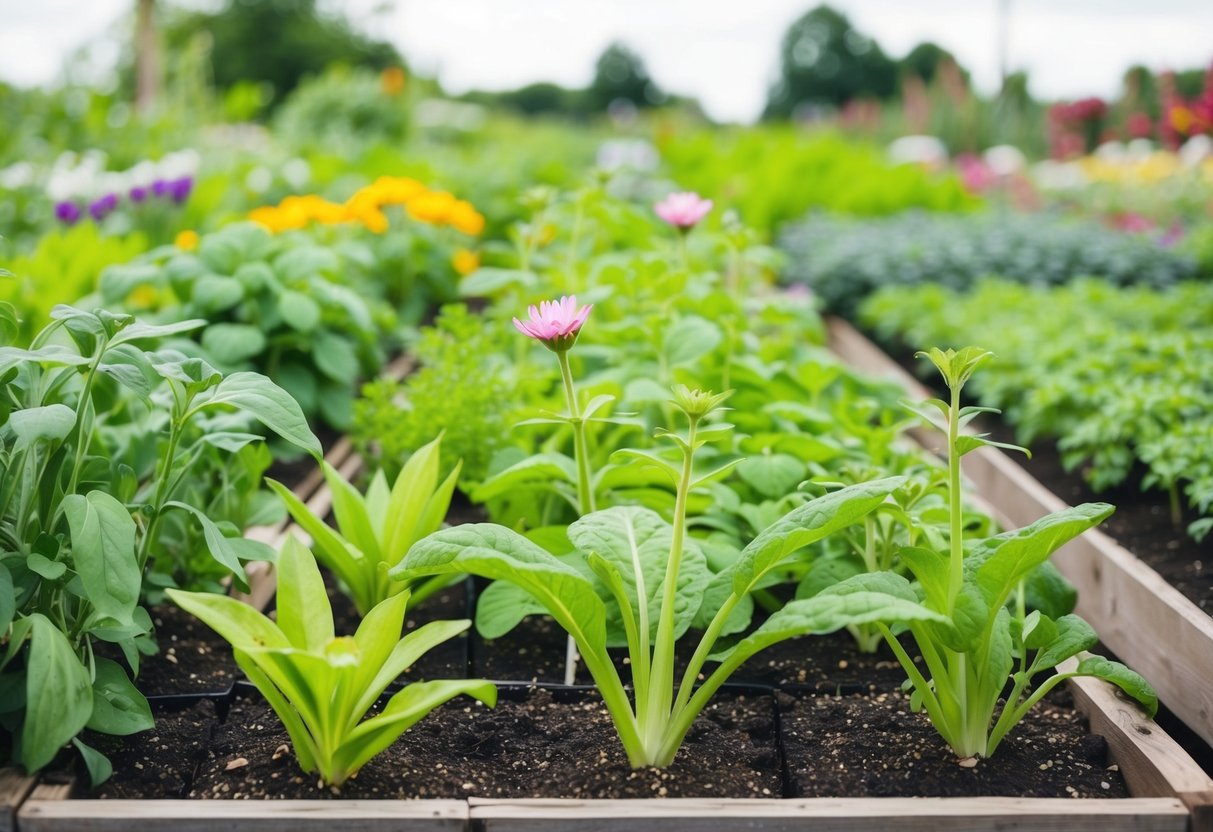
Practicing companion planting and crop rotation can significantly boost the productivity and health of your garden. By pairing compatible plants and rotating crops, you can manage pests naturally and maintain soil fertility.
Beneficial Plant Pairings
Using companion plants is like having a team in your garden that works together. For instance, planting nasturtiums near marigolds helps repel pests like aphids and beetles. Meanwhile, calendulas can attract beneficial insects that help with pollination and pest control.
Pairing sweet potatoes with beans is another smart choice. The beans add nitrogen to the soil, which benefits the growth of sweet potatoes. Additionally, planting herbs like basil near tomatoes can improve their flavor and deter insects.
By using companion planting, you encourage biodiversity and support your edible crops naturally. These pairings help create balance, making your garden more resilient and productive.
Maximizing Garden Space and Health
Crop rotation involves changing what you grow in a specific area each season. This is crucial for preventing diseases and depleting soil nutrients. For instance, rotating legumes with leaf crops as part of the cycle is effective because legumes add nitrogen to the soil.
Biennials, such as cabbage and beets, can be integrated into this plan, maintaining soil health and maximizing space. Alternating locations for plants like leafy greens and root vegetables helps in managing diseases and pests.
By effectively rotating crops, you maintain rich soil and protect your garden from typical problems. Consider planting a mix of flowers like marigolds to boost pollinators, supporting overall garden productivity.
Supporting Pollinators and Beneficial Insects
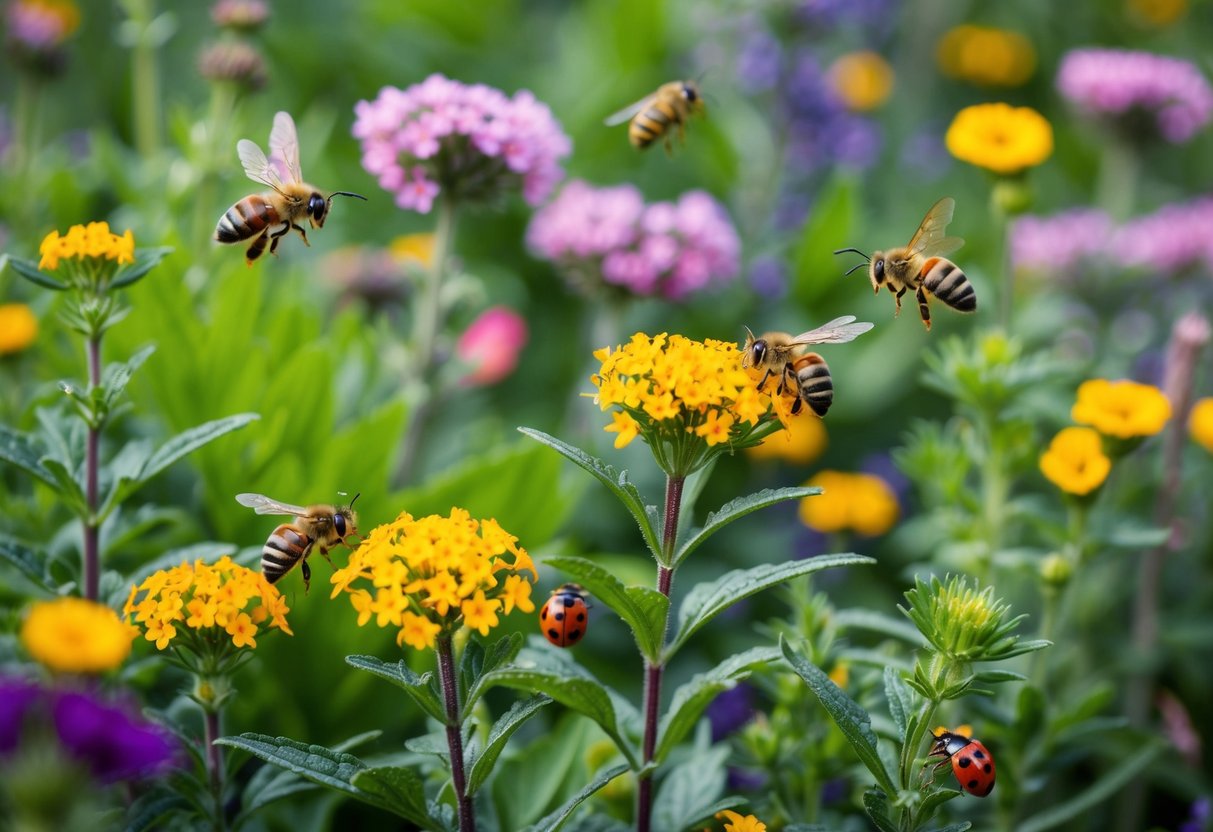
Creating a garden that supports pollinators and beneficial insects is important for a healthy environment. Consider plants that attract pollinators and edible flowers to make your garden both attractive and helpful to the ecosystem.
Planting for Pollinators
To help pollinators, choose plants that bloom in succession. Sunflowers, poppies, and foxgloves are excellent options to sow in June and July. These flowers provide continuous nectar and pollen for bees and butterflies throughout the growing season.
-Nasturtiums and marigolds not only attract pollinators but also serve as companions to vegetables. They can help reduce pests naturally. Calendula’s bright flowers are known to draw in beneficial insects like ladybugs, which can help control aphid populations. Limnanthes, or poached egg plant, also supports different pollinators by providing ample nectar.
Consider sweet alyssum, which attracts hoverflies. Hoverflies help pollinate plants and are natural predators to pests. These plants will not only beautify your garden but also create a thriving ecosystem for pollinators.
Incorporating Edible Flowers
Adding edible flowers to your garden offers both culinary and ecological benefits. Edible flowers like nasturtiums and calendula enhance your dishes with color and flavor, while they also attract beneficial insects.
Marigolds are another great choice. They not only make salads pop with their bright petals but also repel some pests due to their strong scent.
Sunflowers can be grown for their seeds, which are edible and also attract birds to your garden, adding another layer of biodiversity.
Planting these flowers supports pollinators and lets you enjoy fresh, home-grown flavors. By choosing a mix of these plants, you achieve a garden that’s both beautiful and practical, sustaining beneficial insects and providing you with gourmet additions to your meals.







